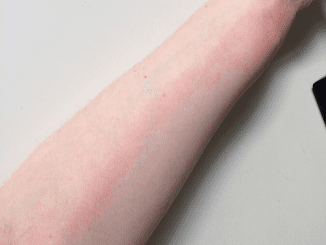With the increasing number of counterfeit products in today’s market, it’s become essential to be vigilant about what we consume—especially when it comes to staple foods like rice. Disturbingly, “plastic rice” has emerged as a dangerous counterfeit, posing serious health risks due to its synthetic components. Rice is a dietary cornerstone for billions around the world, so knowing how to distinguish real rice from its plastic imitation is more crucial than ever. In this article, we’ll explore practical ways to identify plastic rice and safeguard your health.
Why is Plastic Rice Dangerous?

Plastic rice is composed of synthetic materials that may look like rice, but it’s anything but edible. Consuming even small amounts can lead to serious health issues, including gastrointestinal problems, hormonal disruptions, and long-term toxicity. Plastic rice is non-biodegradable, and when it enters your body, it can cause harmful buildup and digestive distress. Because of these risks, identifying plastic rice has become a top priority for consumers worldwide.
Practical Methods to Identify Plastic Rice
Thankfully, several straightforward tests can help you determine whether the rice you’ve purchased is genuine. Let’s dive into the most effective methods.
1. The Water Test: Separating Floaters from Sinkers
The water test is one of the simplest methods to detect plastic rice. Here’s how it works:
- Fill a glass with water and add a tablespoon of rice to it.
- Stir the rice well and let it sit for a few minutes.
- Observe the rice: real rice will settle at the bottom, while plastic rice, which is much lighter, will float to the surface.
This test is effective because plastic’s density is lower than that of real rice, causing it to float. However, be sure to use this as an initial test rather than a definitive answer.
2. The Heat Test: Authentic Aroma vs. Synthetic Smell
Heating rice can reveal a lot about its authenticity. For this test, follow these steps:
- Take a small handful of rice and heat it in a dry pan over a high flame.
- Observe the rice as it heats up. Real rice will give off a pleasant, toasted rice aroma.
- If the rice is plastic, it will start to emit an unusual chemical smell reminiscent of burning plastic.
This test works because plastic rice is made from synthetic polymers that release a pungent odor when exposed to heat. If you notice an odd smell, it’s a strong indicator that you’re dealing with plastic.
3. The Boiling Test: Watching for Changes
Cooking rice can help you detect its authenticity as well. To try this test:
- Bring a pot of water to a boil and add a small amount of rice.
- Observe the rice as it cooks. Genuine rice will absorb water, becoming soft and fluffy as it cooks.
- Plastic rice, however, will either remain undercooked or form a layer on the surface due to its inability to absorb water properly.
Plastic rice tends to float on the surface or clump together in unnatural ways, making it easy to distinguish from the real thing. If you notice that the rice remains hard or doesn’t soften as expected, it could be a sign of counterfeit rice.
4. The Mold Test: Observing Spoilage

Unlike plastic, real rice is prone to spoilage. This test takes a few days but can be highly effective:
- Cook a small portion of rice and place it in a sealed container at room temperature.
- Leave the container undisturbed for 3-5 days.
- After a few days, check for any signs of mold or spoilage. Real rice should develop mold as it decomposes. If the rice shows no change or appears unusually firm or plastic-like, it might contain synthetic components.
Plastic rice does not degrade like organic matter, so a lack of mold or other natural spoilage signs can be a red flag.
5. The Fire Test: Burn and Sniff
One of the most revealing tests is the fire test, where you can actually see the difference between real and plastic rice:
- Take a few grains of rice and set them on fire using a lighter or match.
- Real rice will burn in a natural way and produce a subtle scent similar to burning rice husks.
- Plastic rice, on the other hand, will burn quickly, releasing black smoke and a chemical odor that smells like burning plastic.
The fire test is straightforward and provides instant feedback. If the rice produces an acrid smell, it’s likely counterfeit.
Other Ways to Protect Yourself from Plastic Rice

While these tests are helpful, they’re not foolproof, and sometimes it’s best to take additional precautions. Here are a few tips to ensure you’re purchasing authentic rice:
- Buy Trusted Brands: Opt for rice brands with a good reputation for quality and safety. Known brands are more likely to maintain strict quality control measures.
- Check for Quality Certifications: Look for certifications from recognized food safety authorities. Many countries have agencies that certify food products, and rice that passes these checks is generally safe.
- Inspect Packaging: Pay attention to the packaging for signs of tampering or low quality. Trusted brands use sealed, high-quality packaging that protects the rice and maintains its integrity.
- Observe the Texture and Color: Real rice has a consistent texture and color. Discolored or unusually shiny grains might be a sign of tampering.
The Importance of Staying Informed
Plastic rice is just one example of how counterfeit products can infiltrate the food market. Staying informed about food safety helps protect you and your loved ones from potential health risks. By understanding what to look for and using these simple tests, you can identify plastic rice and avoid it. Keep in mind that safety is always a priority, so if you’re ever in doubt, opt for reputable brands and retailers.
Conclusion: Keep Your Diet Safe from Counterfeit Foods
While the thought of plastic rice may be unsettling, there are effective ways to detect it and protect your health. Using these practical tests, you can ensure the rice you consume is authentic and safe. By buying from trusted brands, examining the rice before cooking, and staying vigilant, you can enjoy peace of mind at every meal. Remember, knowledge is power, and with the right information, you can keep your diet free from harmful imitations.


